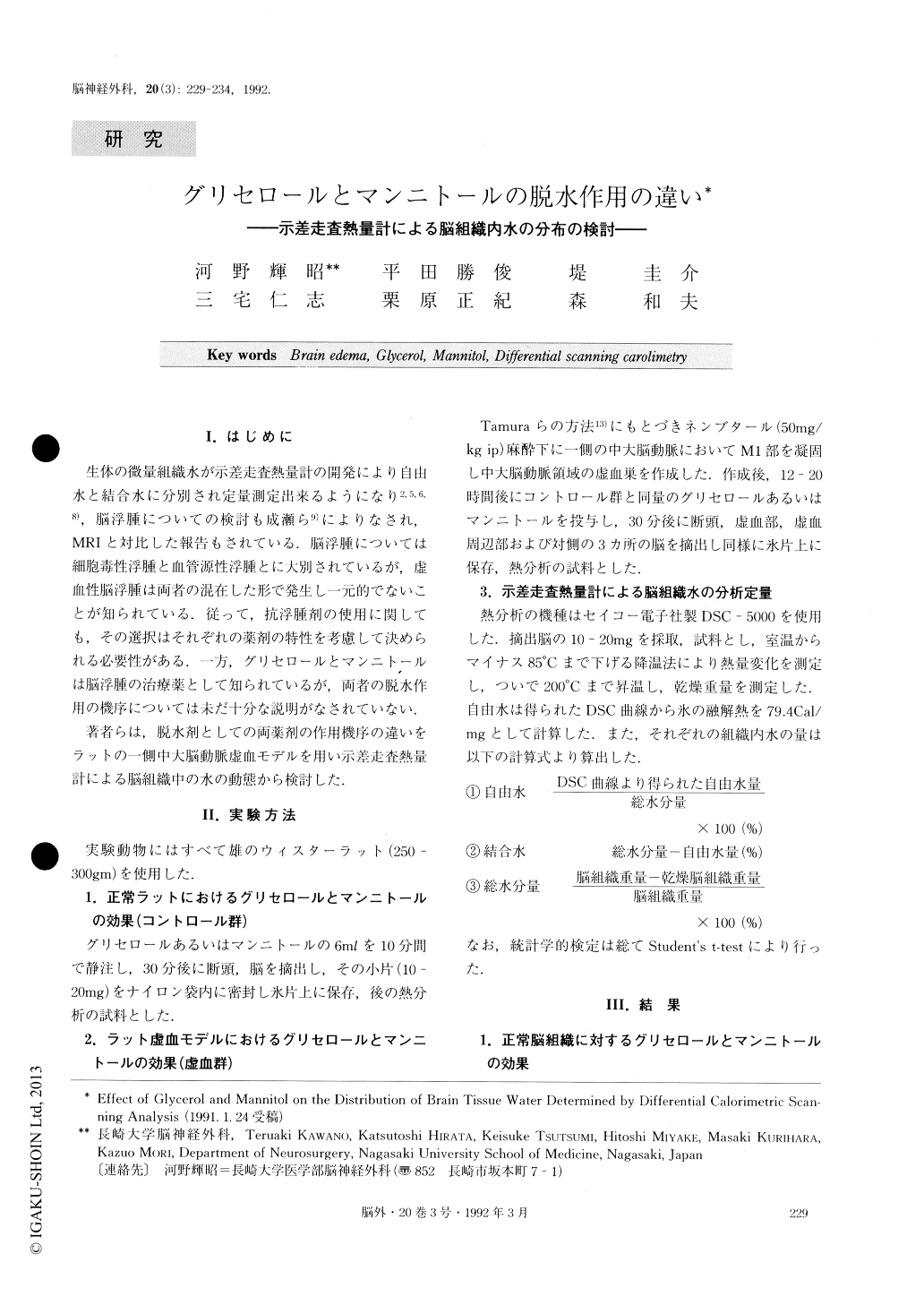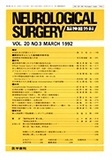Japanese
English
- 有料閲覧
- Abstract 文献概要
- 1ページ目 Look Inside
I.はじめに 生体の微量組織水が示差走査熱量計の開発により自由水と結合水に分別され定量測定出来るようになり2,5,6,8),脳浮腫についての検討も成瀬ら9)によりなされ,MRIと対比した報告もされている.脳浮腫については細胞毒性浮腫と血管源性浮腫とに大別されているが,虚血性脳浮腫は両者の混在した形で発生し一元的でないことが知られている.従って,抗浮腫剤の使用に関しても,その選択はそれぞれの薬剤の特性を考慮して決められる必要性がある.一方,グリセロールとマンニトールは脳浮腫の治療薬として知られているが,両者の脱水作用の機序については未だ十分な説明がなされていない.
著者らは,脱水剤としての両薬剤の作用機序の違いをラットの一側中大脳動脈虚血モデルを用い示差走査熱量計による脳組織中の水の動態から検討した.
To further clarify their mechanisms as “dehydrators”, the effect of glycerol and mannitol on the distribution of tissue water was studied by using differential scan-ning calorimetry. In normal rat brain, glycerol, 30 mi-nutes after infusion, reduced, by a certain amount, the free water contents. However, mannitol had no effect on the amount of tissue water. In the focal ischemic model, produced by Tamura's method, glycerol reduced the free water contents in the perifocal brain tissue. As for the contralateral brain tissue, mannitol not glycerol, reduced the total water contents.
Above findings suggest that the effect of glycerol is mainly to decrease free water fraction in the non ische-mic brain tissue, while mannitol shows its effect through the decrease it produces in the extra-brain wa-ter fraction.

Copyright © 1992, Igaku-Shoin Ltd. All rights reserved.


